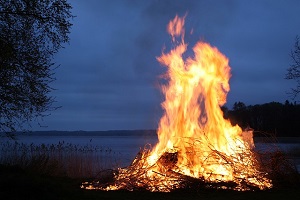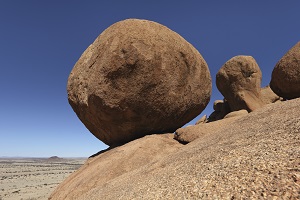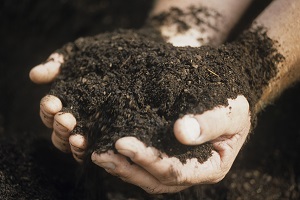In bazi, to truly appreciate the elemental make-up of a person, one has to be able to understand the natural attributes of heavenly stems and earthly branches.
This is especially so with heavenly stems as one among the ten would be the self-element of the person in question.
Pictures tell a thousand words. And if you can visualize the avatar of a particular stem, then predicting what can occur when certain events take place can often be self-explanatory.
For example, if it is raining cats and dogs outside and someone walks out of the cafe without an umbrella, it’s only natural to expect him to be drenched.
When we talk about the characteristics or attributes heavenly stems, we usually discuss them in terms of what they are instead of what they can do.
This is because when you can “see” them for what they are, then what they can do becomes a knowledge that becomes second-nature.
It must be said that it is also because of this that even the most experienced masters can disagree from time to time… because it take judgment to determine what people see. And two different people can have different judgments on the same thing.
The 10 heavenly stems are namely:
- Jia (甲)
- Yi (乙)
- Bing (丙)
- Ding (丁)
- Wu (戊)
- Ji (己)
- Geng (庚)
- Xin (辛)
- Ren (壬)
- Gui (癸)
The following are their attributes and an idea of what their avatars would look like.
1) Jia wood (H1)

Unlike the 5 elements where we cannot definitively appoint one as the first element, jia can be clearly identified as the first among the 10 heavenly stems.
It is yang wood representing strong tall trees. The strongest of which are those with trunk girths that are too wide for a grown man to hug.
These types of wood and timber are hard, solid, rigid, with the rough surface.
2) Yi wood (H2)

With jia associated with yang wood, yi represents yin wood.
As yang wood symbolizes big wood, in wood would be represented by small wood.
This means plants, flowers, fallen leaves and twigs, including grass.
As opposed to strong and sturdy wood as represented by jia, yi would be associated with flexibility.
3) Bing fire (H3)

Bing is yang fire.
This can be pictured as raging flames. None is more appropriate a representation than the sun.
Fire is hot and gives warmth to living and non-living things. It also dries them, and excessive fire can kill.
It is also a source of energy that is essential for life on the planet.
4) Ding fire (H4)

Ding fire is yin fire which represents smaller versions of fire, and flames that are more controlled.
For example, candles and smothering fireplaces that serve the needs of one person or a household.
Something to note is that lighting fixtures do not emit fire energy, but yang energy.
5) Wu earth (H5)

Wu earth, yang earth, or big earth, can be translated to large boulders and rocks. The epitome would be mountains and hills.
The can be seen as the immovable objects that even an irresistible force has to yield to.
They are hard, strong, unforgiving, and can even consists of very precious gemstones inside.
6) Ji earth (H6)

Ji earth is yin earth and can be seen as soil, mud, and sand.
They are essential for the healthy growth of crops so that they can be harvested for consumption and trade.
While big earth (wu) can resist water and even barricade it, small earth (ji) can be vulnerable to water.
Which is a common cause of landslides, beach soil erosion, and foundation problems of a house.
7) Geng metal (H7)

Geng symbolizes yang metal or big metal.
It can be represented by metal raw material and huge structures and tools made of metal.
Weapons such as the axe, sword and blades are manifestations of geng metal.
They are tough, firm, durable, and can be very deadly.
8) Xin metal (H8)

Xin metal can mostly be associated with small metal jewelry like necklaces, bracelets and watches.
This is why they are often recommended as personal items for those lacking the metal element in bazi.
9) Ren water (H9)

Ren water, or yang water, is understandably associated with the ocean, sea, rivers and streams.
They represent water that is moving, and can be a destructive force when angry.
Water is adaptable, easily manipulated, and can be a hassle to contain.
10) Gui water (H10)

Gui water represents yin water and can be pictured as still water in smaller quantity.
They also represent the rain, clouds, and natural phenomena cause by water vapor.
Putting theory into practice
If you are a feng shui and bazi hobbyist, it would be sufficient to learn whether you are the yin or yang representation of a particular element to make basic bazi interpretations.
However, professional practitioners need to be proficient with the representations of each heavenly stem as well as the pictorial avatar that they incorporate.
This is because bazi reading requires these knowledge and information so as to determine the meanings behind certain events, and also to suggest methods to manage adversity.
For example, if someone has a Ding day master, then it might be determine that he or she can be too “hot and dry” if the season of birth is in summer. Then more water might be prescribed to achieve a more balanced bazi.
There are actually parents who are aware that their child would be born during the summer, and choose a water birth delivery so as to counteract the detrimental effects of too much fire in the bazi. This can be even more meaningful when the self-element is one that would benefit from more water.
But above all, the understanding and awareness of the avatars that each heavenly stem shapes up enables a one to have a better picture of the dynamics between the different characters in a bazi and make sense of them more effectively.














